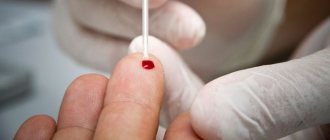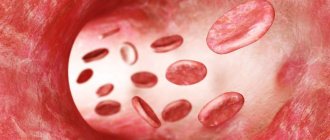Prolactin is increased in men
in stressful situations, with excessive physical exertion, with pain, after sexual intercourse, etc. - these are physiological reasons that do not require correction. Pathological causes include those in which a high concentration of the hormone is caused by disorders in the body.
These include:
- pituitary tumor and hypothalamic diseases;
- kidney and liver failure;
- prostatitis;
- hypothyroidism;
- inflammatory diseases of the central nervous system;
- systemic inflammatory diseases of connective tissue.
In addition, so-called idiopathic hyperprolactinemia, that is, pathology without an obvious cause, sometimes occurs.
Relationship between hormones
It should be noted that the level of prolactin in the male body is closely related to the production of estrogen: the more estrogen is synthesized, the higher the prolactin levels. These, in turn, affect the synthesis of testosterone, reducing its concentration. Hyperprolactinemia in men is a condition where prolactin is elevated.
Symptoms in men mostly concern the reproductive system. Decreased libido and potency are the most common complaints. Due to oligospermia (insufficient ejaculate volume), infertility develops. In addition, the motility and proper development of sperm are impaired. Gynecomastia also occurs - enlargement of the mammary glands of a benign nature, secondary sexual characteristics become less pronounced. As a result of the deviations that arise, a man often experiences psychological discomfort.
The effect of prolactin on the body.
The biological function of prolactin is to support childbirth; its main effect is the formation and regulation of lactation. The hormone is involved in the formation of the mammary glands, promoting the growth of the milk ducts during pregnancy and adolescence. Prolactin stimulates the production of breast milk and promotes natural feeding of children. The effects of prolactin on the body are not limited to the mammary glands. It affects the pancreas and thyroid gland, adrenal glands, and ovaries. In the adrenal glands, prolactin increases the production of adrenaline, norepinephrine, cortisol, androgens, and aldosterone. All these hormones help a nursing woman more easily endure emotional and physical stress. Under the influence of this hormone, the functioning of insulin-producing cells in the pancreas increases, so that the nutrients entering the body are used as fully as possible. The effect of prolactin on the thyroid gland reduces the synthesis of calcitonin, and therefore increases the content of minerals in breast milk. The ovaries are especially sensitive to prolactin. High concentrations of the hormone inhibit ovulation and cause menstrual irregularities. Prolactin regulates the functioning of the immune system, allowing the fetus to develop in the uterus without a rejection reaction. Prolactin in high doses suppresses libido and is also involved in the onset of orgasm. An increase in prolactin levels in the body occurs during pregnancy and breastfeeding; this is necessary for the birth and normal development of the child.
Diagnosis of the disease
The main examination for suspected hyperprolactinemia is to determine the level of prolactin in the blood. To get reliable results, you should not visit a sauna or bathhouse the day before the examination. You should also abstain from sexual intercourse. It is best to draw blood in the morning.
In addition, the patient is shown an X-ray of the skull. If there are signs of expansion of the sella turcica, computed tomography and magnetic resonance imaging are indicated. The scope of diagnostic measures is expanded depending on individual characteristics.
Norms of prolactin in the blood
Laboratories use different equipment and test systems, so normal ranges may vary. This also applies to differences in units of measurement. The gender of the patient matters. The amount of hormones in the blood serum of women is subject to regular fluctuations throughout the menstrual cycle. Normal values change with age or pregnancy².
In children
The pituitary gland begins to produce PRL during fetal development.
Then its concentration drops in the first 1-1.5 months of life². Hormone production is enhanced in the presence of thyrotropin-releasing hormone and estrogen⁵. Table 1. Normal prolactin levels (ng/ml) in children of different age groups⁶
| Age, years | Floor | |
| M | AND | |
| 1-5 | 3,9-20,1 | 2,7-19,5 |
| 6-10 | 2,6-16,1 | 2,7-22,3 |
| 11-13 | 2,3-22,3 | 2,0-31,6 |
| 14-17 | 4,7-16,7 | 3,7-23,3 |
Before adolescence, the concentration of prolactin in girls and boys is almost the same. As young people develop, the ratio of sex hormones and prolactin changes towards adult levels⁵.
Among women
Table 2. Normal prolactin levels in healthy women⁶
| Biological state | Contents of the PRL | |||
| minimum | maximum | |||
| mIU/l | ng/ml | mIU/l | ng/ml | |
| Non-pregnant | 240 | 4,79 | 300-500 | 23,3 |
| 1st trimester | 500 | 23,5 | 2000 | 94 |
| 2nd trimester | 2000 | 94 | 6000 | 282 |
| 3rd trimester | 4000 | 188 | 10000 | 470 |
| Menopause | 107 | — | 290 | — |
Prolactin levels vary throughout the day. Diurnal fluctuations are subject to biological (circadian) rhythm². The maximum content in serum is reached 60-90 minutes after going to bed, and decreases during daylight hours⁷.
In men
In the body of men, prolactin enhances the effects of other pituitary hormones - luteinizing hormone (LH) and follicle-stimulating hormone (FSH). This stimulates Leydig cells, endocrine cells in the testicular area. Prolactin has a direct effect on testicular and seminal vesicle mass by regulating sperm activity².
In a healthy man, normal prolactin levels range from 80-265 mIU/L or 4.01-15.2 ng/ml⁷. Some laboratories indicate 500-540 mIU/L or 20-27 ng/ml as the upper limit.
Treatment of elevated prolactin in men
First of all, it is necessary to eliminate the cause that caused the increase in hormone levels. To reduce prolactin levels, medications are used as an initial remedy; the effect of their administration is usually noticeable after a short time. At the same time, impaired fertility functions are restored. If a tumor is present, treatment is aimed at reducing its size. If drug therapy is ineffective, surgical treatment is indicated. If, after a certain time after the operation, the prolactin level does not normalize, a combination treatment is recommended, including medications and radiation therapy.
Causes of increased prolactin.
The causes of hyperprolactinemia can be organic in diseases of the pituitary gland or functional in diseases of other organs. Lesions of the pituitary gland lead to a large increase in prolactin levels. The cause of organic hyperprolactinemia is most often a pituitary microadenoma, and its concentration can exceed 2000–4000 mIU/l. Functional hyperprolactinemia can appear as a reaction to prolonged and severe stress. A short-term increase in prolactin levels, usually without clinical manifestations, is called transient hyperprolactinemia. This condition may be associated with disturbances in sleep, sexual intercourse or eating. In some cases, doctors cannot determine the cause of increased prolactin levels.
Forecast
Hyperprolactinemia does not pose a threat to the patient's health, and, if diagnosed early, can be easily treated. In the absence of therapy, the disease is complicated by infertility, pathology of the endocrine glands, and the formation of benign and malignant tumors. Specific measures to prevent hyperprolactinemia have not been developed.
To prevent the disease, the following rules should be followed:
- lead a healthy lifestyle - avoid alcohol, smoking, eat right and pay enough attention to physical activity;
- have a permanent sexual partner;
- avoid excessive psycho-emotional stress;
- undergo preventive medical examinations in a timely manner.
If you experience even minor complaints, you should immediately consult a doctor.
Sources
- Bulatov A.A., Makarovskaya E.E., Marova E.I., Melnichenko G.A. Hyperprolactinemia with a predominance of high molecular weight immunoreactive prolactin: differences in the regulation of the level of high molecular weight and monomeric forms in the blood. Problems of Endocrinology. 1995;41(6):19-23
- Melnichenko G.A., Marova E.I., Dzeranova L.K., Vaks V.V. Hyperprolactinemia in women and men: A manual for doctors. M. 2008.
- Clinical recommendations of the Ministry of Health of the Russian Federation. Female infertility. Year of approval (revision frequency): 2021.
- Federal clinical recommendations of the Ministry of Health of the Russian Federation on hyperprolactinemia: clinical picture, diagnosis, differential diagnosis and treatment methods. 2021.
- Hyperprolactinemia syndrome in children and adolescents: causes, diagnosis, treatment. / V.V. Smirnov, F.I. Morozkina, M.D. Utev // Attending Physician. – 2014. – No. 12.
- Ph.D. Nebyltsova O.V., Klimova Zh.A., Nosenko G.A., Boyko I.V., Ph.D. Klishnya M.A., Chernyshova L.A., Knyazeva L.P., Malikova S.V., Danilova I.E., Abasheva S.N., Degtyarenko O.A., Prishchepa L.A. Laboratory handbook. 2011
- Obstetrics: national guide / ed. G. M. Savelyeva, G. T. Sukhikh, V. N. Serov, V. E. Radzinsky. — 2nd ed., revised. and additional - M.: GEOTAR-Media, 2021. - 1088 p. — (Series “National Guidelines”). — ISBN 978-5-9704-4551-8
- Crowley WR, Ramoz G, Torto R, Keefe KA, Wang JJ, Kalra SP. Neuroendocrine actions and regulation of hypothalamic neuropeptide Y during lactation. Peptides. 2007;28(2):447-452. doi:10.1016/j.peptides.2006.09.025
- Nad Yu.G. Hypoprolactinemia syndrome - a right to exist? // Eurasian Union of Scientists. 2015. No. 9-4 (18).
Diagnostic measures
It is impossible to determine the hormone level by the presence/absence of the symptoms mentioned above. For this purpose, a venous blood test is performed. The procedure is scheduled for the morning. No special preparation is required for collecting material, but it is advisable to calm down before visiting the laboratory.
Blood tests are carried out 3 times at different stages of the menstrual cycle. If elevated prolactin levels are confirmed in non-pregnant women, the patient is prescribed mammography and MRI of the brain.
Treatment of the condition
Before treatment, it is important to find out whether the change in the amount of the hormone is physiological or pathological. To do this, the doctor will prescribe monitoring of indicators. In addition, anamnesis helps to establish the true cause of the changes. If a hormonal surge was preceded by intense physical activity, active sports, or psycho-emotional shock, then we can talk about a temporary imbalance that the body compensates on its own.
If we are talking about pathological processes, then an endocrinologist knows how to lower prolactin in men. At the clinic Dr. AkNer you will be able to undergo a comprehensive examination and treatment. If necessary, an andrologist and a reproductologist will be involved in therapy.
If the problem is caused by pathologies of internal organs (kidneys, liver, thyroid gland), consultations with relevant specialists will be required. If an adenoma or tumor of the pituitary gland is detected, the help of an oncologist is necessary.
In most cases, compensation for elevated prolactin in men is performed with medication. For correction, antiprolactin therapy is individually developed in each case. It requires constant monitoring of hormone levels under the supervision of a specialist.
References
- Huang W., Molitch M.E. Evaluation and treatment of galactorrhea. 2012
- Melmed S. et al. Diagnosis and treatment of hyperprolactinemia: Endocrine Society Clinical Practice Guidelines, 2011.
- D. Kasper. Harrison's Principles of Internal Medicine. NY. 2015.
- Kazanueva F.F. and others. Guidelines of the Pituitary Society for the diagnosis and treatment of prolactinomas. 2006;
- Melmed S., Kleinberg D. Anterior lobe of the pituitary gland. Williams Textbook of Endocrinology. 2008.
- Mancini T., Casanueva F.F., Giustina A. Hyperprolactinemia and prolactinomas. 2008.
- Losa M. Surgical treatment of prolactin-secreting pituitary adenomas: initial results and long-term results. 2002.
- Cavallaro R, Cabergoline treatment of risperidone-induced hyperprolactinemia: a pilot study. 2004.
If you find an error, please select a piece of text and press Ctrl+Enter
How is the test used to determine prolactin levels?
When testing for prolactin, blood is taken from a vein in the arm three to four hours after waking up. This will take a few minutes in the lab. There is no need to prepare for it.
Test results may be affected by:
- some birth control pills;
- high blood pressure medications;
- antidepressants.
Therefore, it is necessary to tell the doctor who ordered the test about all medications you are taking before the test.
Test results can be affected by sleep problems, severe stress and physical activity before the test.
Hyperprolactinemia caused by pituitary adenomas
Pituitary adenomas that secrete prolactin develop from lactotropic cells. Tumors of this type make up up to 50% of all pituitary tumors and can be characterized by increased secretion of not only prolactin, but also other adenocorticotropic growth hormones and thyroid-stimulating hormones.
Prolactinomas are classified by size into microprolactinomas and macroprolactinomas. Microprolactinomas are more common in women than in men (20:1). Macroprolactinomas have the same ratio.
The spread of macroprolactinomas in men is explained by the fact that men have a longer asymptomatic period, so the adenoma is already advanced when diagnosed. Most prolactinomas are not cancerous, but in rare cases these tumors can metastasize.
Treatment of hyperprolactinemia
Treatment methods for hyperprolactinemia depend on what causes led to increased prolactin in women. If the cause of the disease is pituitary tumors, then it is necessary either to prescribe drugs that reduce the size of the tumor, or to remove it surgically. For this purpose, microsurgical techniques are used using a laser scalpel or cryodestructive technologies. If computed tomography confirms that there is no pathology in the area of the sella turcica, then dopamine agonist drugs are prescribed, which reduce the concentration of prolactin in the blood. The oldest of them is bromocriptine. It stimulates specific receptors in the cerebral cortex, which seriously inhibits the production of prolactin. The level of the latter is rapidly decreasing.
The menstrual cycle is restored as a result of bromocriptine therapy individually for each woman: sometimes after eight weeks, sometimes after eight months after the start of treatment. In some patients, hormone levels return to normal even after a few days. The dose is selected individually. Treatment continues until the menstrual cycle normalizes. To prevent relapse of the disease, bromocriptine therapy is carried out over several cycles. However, the drug has side effects such as constipation, nausea, vomiting, dizziness, headache, dry mouth and fatigue. The side effects of the second generation of drugs, which include Norprolac, are less pronounced.
This drug is very convenient because it only needs to be used once a day. Its minor side effects do not interfere with treatment at all. Dostinex belongs to the third generation of dopamines. This is a long-acting drug. When taking it, prolactin decreases as much as possible after two to three weeks. It is taken only once a week. The active substance is quickly absorbed into the blood, which allows you to get rid of nausea and vomiting.
If the cause of increased prolactin in a woman is a pathology of the thyroid gland, then the administration of hypothyroid hormones can normalize prolactin levels. Particular attention is paid to the treatment of hyperprolactinemia if pregnancy has already occurred, since an increase in the hormone can provoke spontaneous abortion. If the cause of the disease is prolonged stress, treatment is carried out together with a psychologist.
If elevated prolactin is detected in a woman, the consequences of which frighten her, contact the Tambov IVF Center. We will offer you to undergo diagnostics using the most modern methods, based on the results of which we will prescribe an individual treatment program. Don't wait for elevated prolactin in women to cause irreversible consequences.
conclusions
Hyperprolactinemia is a hormonal imbalance that causes certain symptoms. The pathology can occur in the practice of a family doctor, obstetrician, endocrinologist or other specialist. Simple laboratory diagnostics and available treatment methods for hyperprolactinemia make it easy to regulate and maintain a stable condition of the patient.
In accordance with treatment recommendations, the prognosis of the disease in most cases is favorable and does not have a negative impact on the health, work and physical activity of patients.









